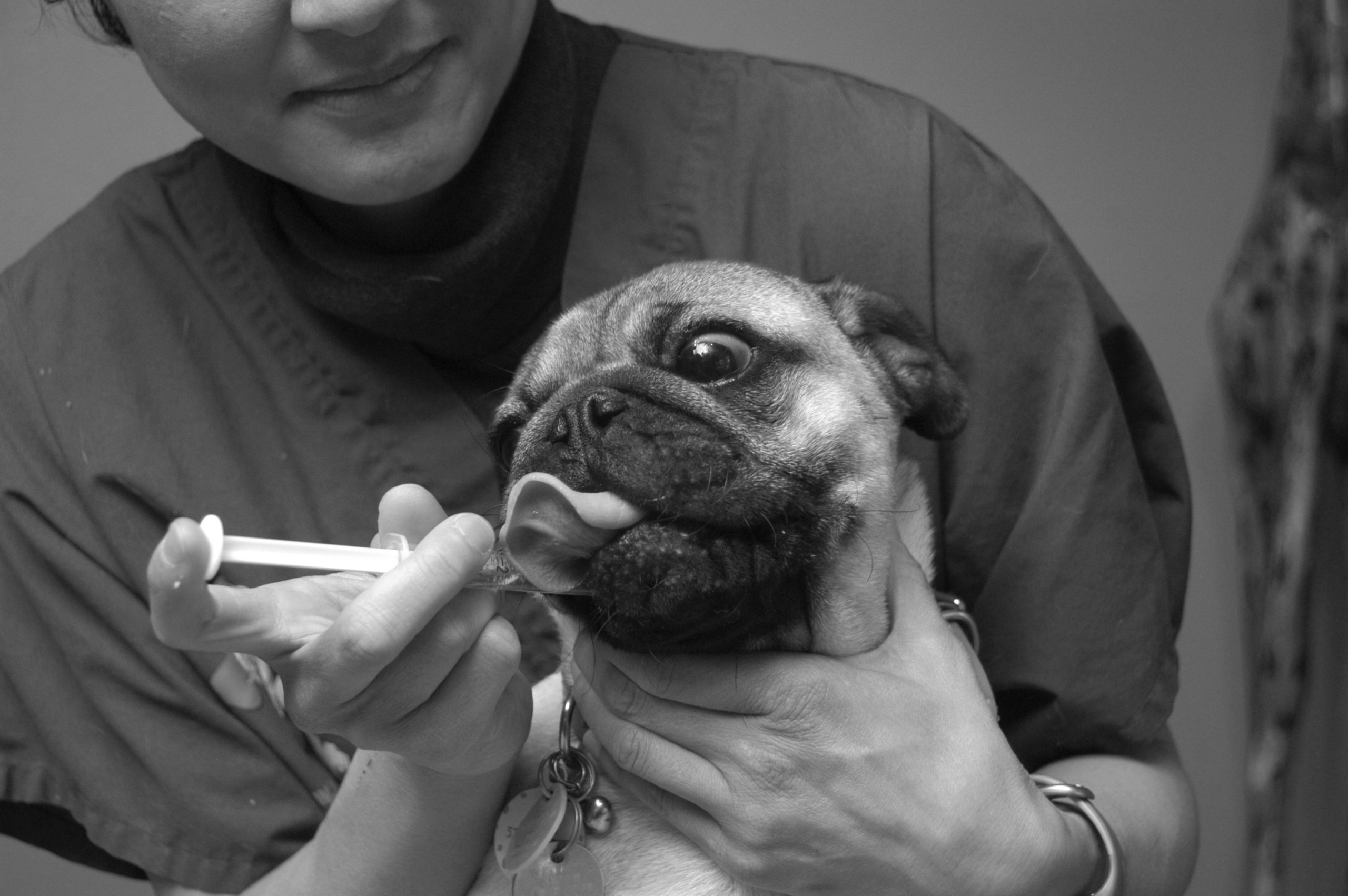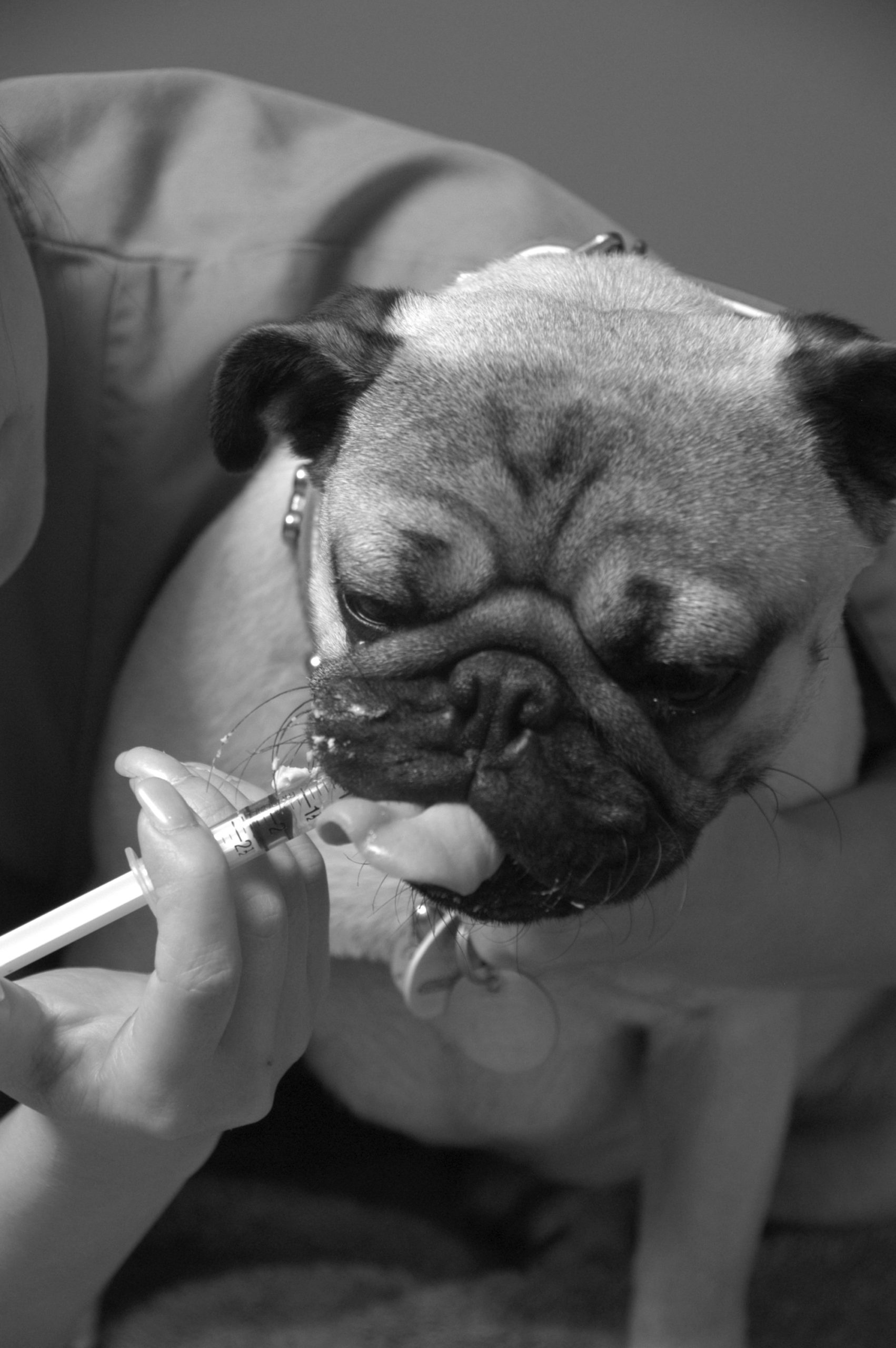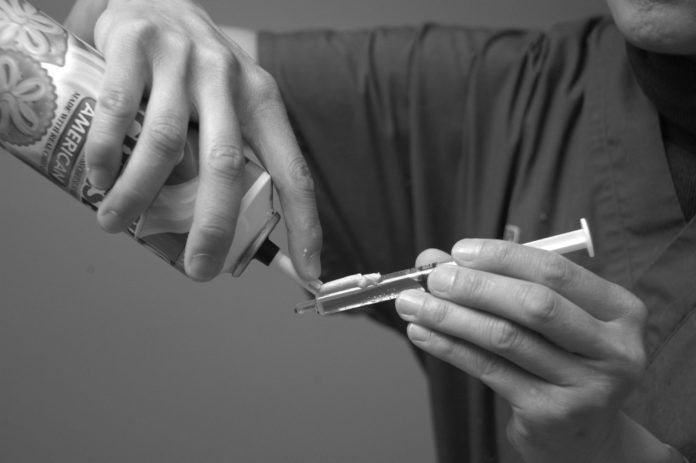[From Tufts November 2010 Issue]
Restoring a dog’s health requires a partnership between owner and veterinarian. The veterinarian selects the appropriate medicine and relies on the owner to give the medicine in the correct dose at the right time for the full duration.
Far too often, the medicine stays in the refrigerator or the medicine cabinet because an owner lacks the confidence to administer it or tires of struggling with his dog to accept the medicine.
“Simply stopping giving liquid medicine out of frustration can actually worsen your dog’s condition and may even trigger other health problems,” says Scott Shaw, DVM, a specialist in emergency and critical care at Cummings School of Veterinary Medicine at Tufts University.
Make Medication Time a Rewarding Experience
We offered a step-by-step guide to administering pills in the August 2010 issue. Here, our experts provide tips on giving liquid medicine. Some medications come only in liquid form and others, such as antibiotics, are available in both pill and liquid forms.

The critical first step: Make this a pleasant, rewarding experience for your dog so that he associates taking medicine with an opportunity for a reward. Be patient and confident. Introduce your dog to the syringe you’ll be using by first topping it with peanut butter or a squirt from an aerosol can of cheese for him to lick. He’ll associate the syringe with receiving treats.

“It is important to take the time to train your dog that getting medicine is a fun procedure that merits tasty rewards,” says behaviorist Sophia Yin, DVM, the author of Low Stress: Handling, Restraint and Behavior Modification of Dogs & Cats(CattleDog Publishing). With more than 1,600 how-to photographs, the book is a resource for veterinarians and veterinary technicians.
Next, make sure that you know the right dosage to avoid an overdose. Do this by having your veterinarian identify the amount on the syringe using tape or a permanent marker. “Don’t hesitate to contact your veterinarian if you have any questions or feel uncertain about how to use a syringe,” says Dr. Shaw.
The technique differs from giving your dog a pill. “In giving liquid medications to your dog, do not tilt your dog’s head back as is done when ‘pilling,'” says Dr. Yin. “Also, your dog’s mouth needs to be opened only a little because the syringe can be inserted into the side of his mouth” and then moved to the back. After your dog swallows the medicine, follow up with a treat and praise.
The photographs accompanying this article illustrate the proper technique for administering liquid medication.






My Dog Has Parvo 🙁 I Am A Retired Medical Assistant And I’m Having A Hard Time With This! How Do I Know When My Dog Is Out Of The Woods And What Is Expected Timing? Kimberke2@aol.com I Can Do “Patient Care”, But I’m Having A Hard Time With My Dog. She Turned A Year Old April 1. I Have Been Dealing With This The Past 4 Days. I So Appreciate Your Response. Thank You For Your Time.
This information is helpful. Thank you very much.9